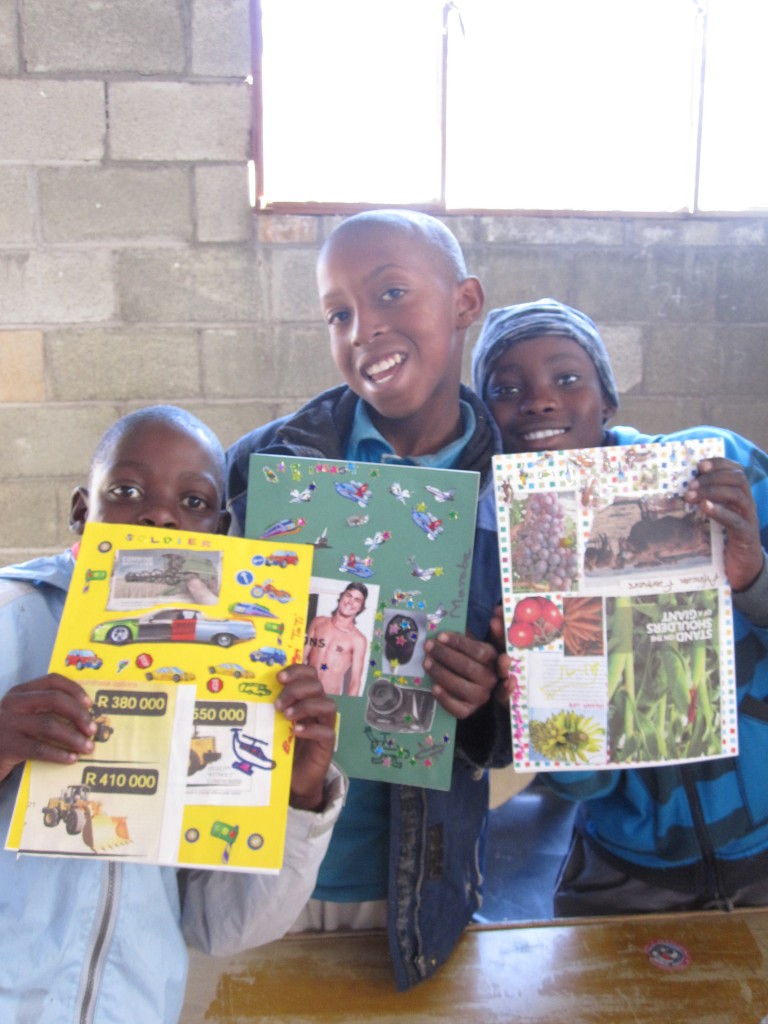A nurse in the obstetrics ward said above statement after we asked her for some more feedback from our devices. Who knew we’d get more answers if we gave them sweets? hah
Teach for Lesotho
For the past few weeks, Melissa and I have become increasingly involved in planning and teaching classes for caregivers. These women are the same ones I wrote about last week – they are typically elderly and care for orphans in their village. After doing out PMTCT class, this week we helped teach a class on income-generating activities. To illustrate the principles of basic economics for a microenterprise, Melissa and I made friendship bracelets the night before, and then wrote a skit about two different people trying to sell them.
In the skit, I played a woman who sold her friendship bracelet, and then immediately used up all of her earnings when she bought some bread. Soon enough, she was empty-handed. Sad times.
The wiser character, played by Melissa, sold her friendship bracelet and put aside money and then bought more materials to sell more braelets. After continuing this for some time, the audience could see how much more money she had saved!
The women loved it and were laughing and clapping throughout the skit. They’re pretty excited about a few project ideas they came up with – like growing potatoes and selling homemade cardigans.
We’ve also done a couple classes for orphans, where we teach basic life skills. They’re really sweet kids!
This past week, we made memory books – they’ll serve as journals for the next classes. On the front of each book, each kid illustrated what he wanted to be when he grew up. All of them got really into it!
It looks like we’re looking at the world’s future mechanics, pilots, and farmers!
Success! Installing the Phototherapy Lights
We did it! By working with the maintenance team of the hospital, we were able to design a welded wall mount that can be used to hold our phototherapy lights over a crib in a nursery of the pediatrics ward.
We installed it this past week. It’s looking pretty snazzy, if I do say so myself!
Ta-da! The nurses were pretty stoked too.
Ups and Downs with Breath Alert
Dear reader, I’m sure you’re aware of how close I hold the Babalung device to my heart. It’s the project that my senior design team and I worked on for the past year.
This apnea monitor has been a workhorse for the first month or so. I demonstrated to nearly all of the nurses in the obstetrics ward how it can detect each breath of a baby, and can stimulate a vibration motor if the baby stops breathing. The nurses gave us some great feedback. They really liked the device, especially the visual alarm – a red lamp that blinks on and off – if the baby is in respiratory distress. They commented that they would also like an audible alarm since sometimes they’re in the labor ward next door.
About a week or so ago, I took it out to demonstrate it to another nurse when I noticed that the vibration motor didn’t go off. Later that day I whipped out my digital multimeter and performed a serious amount of tinkering. I was then able to detect that some of the wires had snapped at the base of one of the major connectors.
I didn’t have an easy fix – the connector isn’t sold in Lesotho, so I couldn’t strip the wires and start from scratch. I also didn’t have a soldering iron with me, so I was at an impasse. After traveling to the nation’s capital, I picked up a soldering iron and enlisted the help of a Basotho electrician, who helped me burn a hole through the plastic connector so we could properly solder the wires together inside the connector.
It’s still a bit finicky, but it’s working! And now I can brainstorm ideas to make a strain relief for those wires in the next Breath Alert iteration.
Eye Clinic at Maseru
While in the nation’s capital to pick up some materials, we were also able to shadow an outreach eye clinic.
The guy pictured is a medical student who’s interning at the eye clinic. They’re doing an excellent job taking care of the equipment, so Melissa and I definitely give this department a Technology Thumbs-Up.
Cultural Awkwardness Part III
I’m pretty much fluent in Sesotho by now. To prove it, here’s an entire conversation that I can actually have.
A: “Hello!”
B: “Hello!”
A: “How are you?”
B: “I am well. How are you?”
A: “I am well.”
…
A: “It is cold.”
B: “Yes.”
…
A: “Goodbye.”
B: “Goodbye.”
Like I said, I’m pretty much fluent.
Sometimes, though, I confuse the word for “goodbye” (“salahantle”) for the Sesotho word meaning “I’m doing well!” (“kepelehantle”).
Case in point: After talking with one patient for about half an hour outside of the clinic, I said goodbye to her. There were a bunch of other women nearby, along with their kids. I was feeling particularly cheerful and social, so I decided to wave and say goodbye to everyone I saw.
Or at least, I thought I was saying goodbye.
So in the end, 30 women see me walking out of the hospital and waving at them, grinning, and saying loudly, “Kepelehantle!! Kepelahantle!”
“I’m fine!! I’m fine!”





